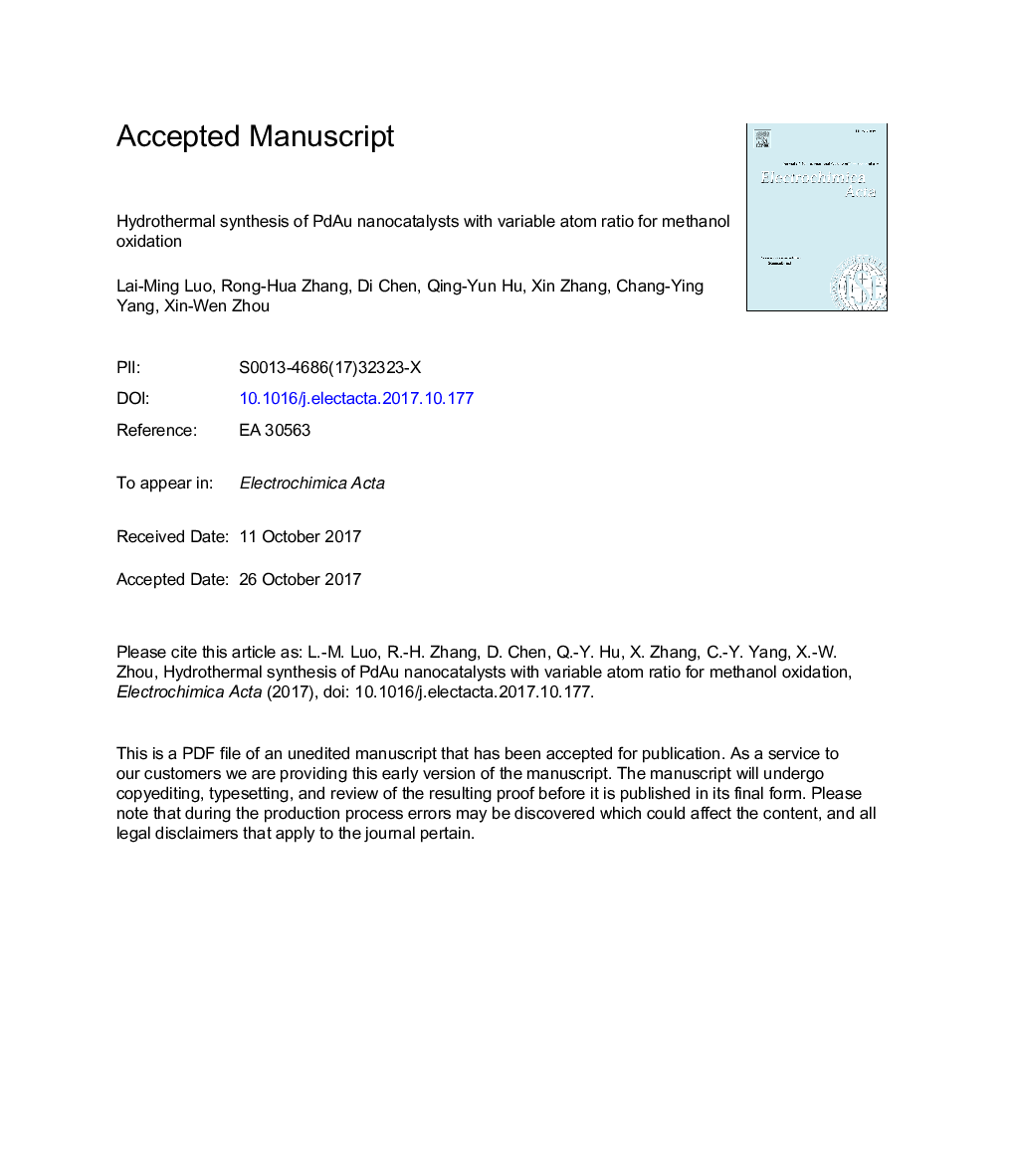| Article ID | Journal | Published Year | Pages | File Type |
|---|---|---|---|---|
| 6604821 | Electrochimica Acta | 2018 | 25 Pages |
Abstract
Bimetallic PdAu alloy nanocatalysts with variable Pd:Au atom ratios are synthesized by a facile hydrothermal method using P123 both as reducing reagent and protectant at 180 °C. The structure, composition and morphology of the PdAu nanocatalysts are characterized in detail, and the morphology can be well regulated. Different dimension and various structures including nanoflowers, nanochains and hollow nanospheres of PdAu nanoparticles can be obtained through changing the synthesis conditions. The electrocatalytic performance of the PdAu nanocatalysts for CH3OH oxidation is investigated. In alkaline media, Pd2Au nanocatalysts own the best methanol catalytic activity than other proportion PdAu nanocatalysts, commercial Pd-black and Pd/C catalysts. The PdAu nanocatalysts synthesized at 100 °C shown an enhanced electrocatalytic performance compared with the PdAu nanocatalysts obtained at 180 °C. It might be that the lower reaction temperature can reduce the particle size and increase the particle dispersity, thus generate more catalytic active site. The PdAu alloy nanocatalysts have a widespread application prospect in direct methanol fuel cell (DMFC) because of the special nanoflower-like Pd@Au core-shell structure and enhanced electrocatalytic performance.
Related Topics
Physical Sciences and Engineering
Chemical Engineering
Chemical Engineering (General)
Authors
Lai-Ming Luo, Rong-Hua Zhang, Di Chen, Qing-Yun Hu, Xin Zhang, Chang-Ying Yang, Xin-Wen Zhou,
